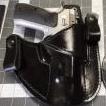
Neat Oil And Bee'z Wax Read It But!?
By
OLDNSLOW, in Dyes, Antiques, Stains, Glues, Waxes, Finishes and Conditioners.

By
OLDNSLOW, in Dyes, Antiques, Stains, Glues, Waxes, Finishes and Conditioners.